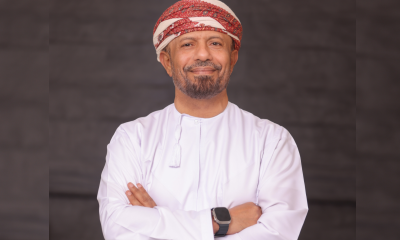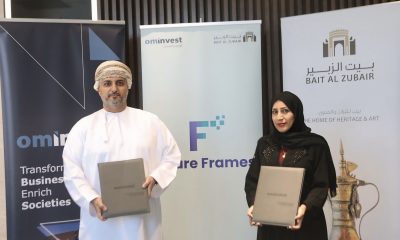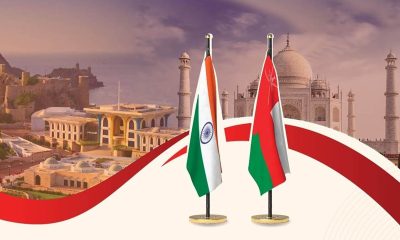Oil & Gas
Shaping the Age of Gas

Although America has led the way in developing shale, it actually has fewer shale resources than China, Argentina and Algeria. So there is a long way to go. But it will take time. Of those other countries, we only expect to see China producing from shale in large volumes over the next two decades.
SECURITY
So there is sufficient energy to meet growing demand. The next challenge is that of energy security – connecting the energy with the people who need it – and doing that affordably. Gas has an increasing part to play here as countries are able to access more diverse sources of supply – and develop more of their own.
The growth of shale means North America is expected to become a net exporter in the next few years, providing more gas for the global market. There is a raft of new LNG projects globally which are expected to add around 20 billion cubic feet a day to the market by 2020. In fact, our forecasts show LNG overtaking piped gas as the dominant form of traded product by 2035.
Then there is also a series of major pipeline projects – from Europe to Asia to North America. All of this is creating a more integrated global market for gas. This is particularly important here in Europe. The EU consumes around 13 per cent of the world’s gas, yet it only has less than 1 per cent of the reserves. This creates two issues. The first is import dependency – Europe is the largest energy importer in the world and currently depends on Russia for about 30 per cent of its gas. The second is a more recent disposition to imported coal that runs counter to environmental objectives. With gas in relatively short supply, cheap coal displaced from the US – by even cheaper gas – is finding a ready market in Europe.
These are the drivers behind the EU’s plans for an ‘Energy Union’ – to reduce dependency on imports, diversify supplies and renew its commitment to lower carbon energy. I think this is absolutely right – although I would also observe that Russian imports may not be as uncertain as they can appear. As well as Europe needing gas from Russia, Russia needs revenues from Europe. In 2013, Russia earned $73 billion from gas sales, mostly from the EU.
This mutual dependency has kept supplies flowing since the Cold War, through many times of tension. Energy can act as a bridge between countries. Nonetheless, it is absolutely right for Europe to seek to diversify its supplies and make the region more gas-friendly. The European Union is committed to the development of single markets. So it is only right to complete the single market in gas, with new interconnector pipelines linking countries together and driving greater competition. And it is right to continue to develop the EU Emissions Trading System into a truly effective mechanism for lowering emissions. This will all be good for consumers.
There is also a realization that having more LNG regas facilities will ensure that additional import capacity is available in an emergency. There is also a place for alternative pipeline supplies. For example, one of the biggest and most complex gas projects currently underway anywhere in the world is the new 3,500km Southern Corridor between the Shah Deniz gas field in the Caspian and southern Europe. It’s a completely new route for gas into Europe, being led by BP, which is on schedule to start delivering up to 16bcm gas a year by 2018 through Georgia, Turkey, Greece, Bulgaria, Albania and Italy.
But as I mentioned, energy security is not only about imports. It’s also about accessing domestic resources that have not yet been developed. We are now seeing examples around the world where such resources are being unlocked when you have the right conditions above the ground as well as the right resources below the ground.
In our own business, we have seen this at work in places such as Egypt, where we have just been able to sanction a $12 billion investment package, and in Oman, where the government has opened up vast tight gas reserves for development and we are now planning to drill around 300 wells over an area roughly the size of urban Paris. Gas-fired power stations also provide the most flexible source of power, and hence have a role to play in balancing intermittent supplies, such as wind and solar, which are generally local and hence secure.
-

 Leaders Speak2 months ago
Leaders Speak2 months agoDhofar International Development and Investment Company: Driving Sustainable Growth and Strategic Synergies in Oman’s Investment Landscape
-

 Economy1 month ago
Economy1 month agoMaal Card: What Oman’s New National Payment Card Means for Everyday Users
-

 Events2 months ago
Events2 months agoOER Corporate Excellence Awards 2025 Honours Entities and Innovations in Oman
-

 Arts and Culture2 months ago
Arts and Culture2 months agoOminvest and Bait Al Zubair Launch “Future Frames” to Empower Youth through Art and AI
-

 News1 month ago
News1 month agoSheikh Suhail Bahwan, Chairman of Suhail Bahwan Group, Passes Away
-

 Economy1 month ago
Economy1 month agoOman Unveils Official Omani Rial Symbol in Landmark Move to Boost Global Currency Presence
-

 News1 month ago
News1 month agoOIG Appoints New CEO to Lead Its Next Chapter of Excellence
-

 News4 weeks ago
News4 weeks agoReport: How India & The Middle East Are Exploiting Immense Economic Synergies





























You must be logged in to post a comment Login